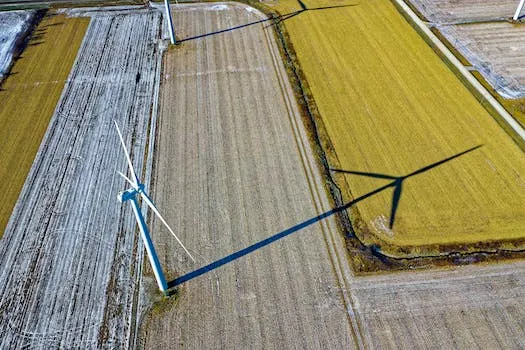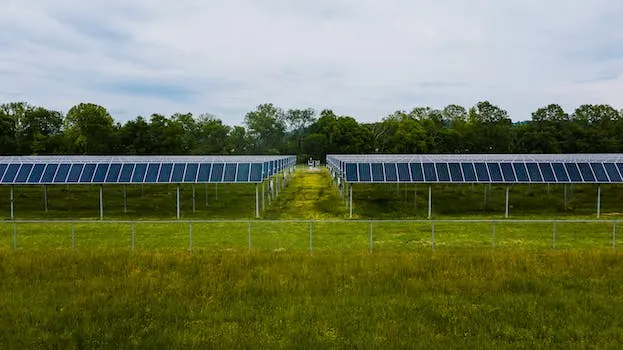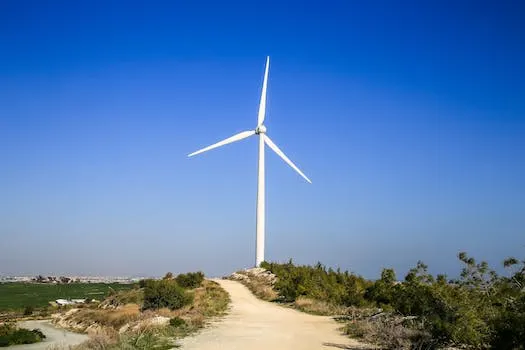
5 Exciting Green Technologies to Look Out For
Climate change is one of the most pressing issues facing the world today, and green technologies are becoming increasingly important in order to reduce our carbon footprint and help the environment. In this article, we will be looking at five of the most exciting green technologies to look out for. According to World Energy Outlook 2022, the global energy crisis can be a historic turning point towards a cleaner and more secure future. Majorities of Americans support an array of measures to address climate change but stop short of a full break with fossil fuels. Climate tech brings together innovative approaches and solutions needed to decarbonise all sectors across the global economy. The science is clear: emissions need to be reduced by almost half by 2030 and reach net-zero by 2050 in order to avoid the worst impacts of climate change. One potential step suggested by natural scientists and economists would be widespread adoption of renewable energy sources such as solar power or wind turbines, as well as electric vehicles powered by clean energy sources like hydrogen fuel cells or batteries. Additionally, reducing fossil fuel use in buildings and transportation by 92%, along with cutting refinery pollution by 94%, could represent some of the most effective measures taken against climate change yet seen.
1. Solar Energy
Solar energy is one of the most exciting green technologies to look out for in the future. By harnessing the power of the sun, we can generate clean, renewable energy to power homes, businesses and even entire countries. Solar energy is becoming increasingly efficient and cost-effective, with estimates that by 2050 it will be the largest source of electricity in the world. Solar power is generated from sunlight which is converted into thermal or electrical energy - making it a clean and abundant renewable source. Renewable sources such as wind and solar emit little to no greenhouse gases, are readily available and often cheaper than coal, oil or gas.
Solar power has an unlimited potential as a source of energy due to its availability and renewability; however only two percent of global electricity generation comes from solar PV as of 2018. Despite this low figure there was a record growth in 2021 with 179 TWh generated from solar PV - representing 3.6% of global electricity generation - showing that solar technology is rapidly advancing towards becoming a major player in decarbonizing our societies. With innovation bringing down costs for renewable sources such as solar power, it looks set to become an increasingly attractive option for powering our future needs.
2. Electric Vehicles
electric vehicles are becoming increasingly popular due to their efficiency and reduced emissions. They are now available in a variety of shapes and sizes, making them an attractive option for those looking to reduce their carbon footprint. Despite the myth that electric vehicles are worse for the climate than gasoline cars because of battery manufacturing, all forms of electric vehicles can help improve fuel economy, lower fuel costs, and reduce emissions. EVs have surged in demand and hit a record number last year as more people turn to battery-operated cars. While no greenhouse gas emissions directly come from EVs, they still run on electricity that is largely produced from fossil fuels. However, even with this factored in, EVs are still better for the environment than an average new gasoline vehicle no matter where you live in the U.S., according to a greenhouse gas analysis conducted by Forth Energy. Therefore it is clear that electric vehicles offer many benefits over traditional petrol-powered cars when it comes to reducing your carbon footprint and helping protect our environment.
3. Wind Energy
Wind energy is an exciting green technology that is becoming increasingly popular. By harnessing the power of the wind, we can generate clean, renewable energy to power homes and businesses. Wind turbines are becoming more efficient and cost-effective, making them a viable source of green energy. wind power is a clean and renewable source of energy that doesn't generate any greenhouse gases. It's also the fastest-growing form of renewable energy in terms of global capacity growth. Offshore wind power is an infinite source of renewable energy with no emissions or other environmental impacts associated with its conversion into electricity.
Innovative ways to capture and retain wind and solar energy have made renewables a more important part of our overall power supply mix. wind turbines are designed to convert kinetic motion from the wind into mechanical or electrical power without producing any harmful emissions or pollutants in the process. This makes it one of the most efficient technologies for producing clean, sustainable electricity with minimal environmental impact compared to other sources such as coal or natural gas plants.
Wind turbines come in various sizes ranging from small residential units up to large commercial installations capable of powering entire cities at once – making it possible for us to access this abundant resource on both small and large scales alike! As technology continues to improve, so too does our ability to capture more wind energy efficiently while reducing costs associated with installation and maintenance over time – making it even easier for us all benefit from this clean form of renewable electricity generation!
4. Hydropower
Hydropower is an increasingly popular form of green energy that harnesses the power of water to generate clean, renewable electricity. It is estimated that by 2050, hydropower will be the second largest source of electricity in the world. This renewable energy source relies on the water cycle, which is driven by the sun, making it a sustainable and reliable option for powering homes and businesses. Hydropower currently has a key role in transitioning to clean energy due to its massive production of low-carbon electricity. In fact, it produces over twice as much energy as wind and over four times as much as solar. Additionally, hydropower costs less than most other sources such as coal, petroleum and natural gas making it an affordable option for many people around the world. Except during periods of extreme drought when water levels are low, we can count on this renewable source to provide us with reliable power at an affordable cost for years to come.
5. Recycling Technologies
Recycling technologies are becoming increasingly important as a way to reduce waste and conserve resources. From composting to upcycling, there are a number of exciting technologies that make it easier to reduce, reuse, and recycle. By investing in these technologies, we can help to reduce our carbon footprint and create a more sustainable future. Recycling conserves natural resources, reduces pollution and saves energy. It involves sorting and cleaning up trash to be reused or repurposed into new products or materials. This business approach minimizes the company's strain on natural resources and contributions to climate change. In some cases, if waste is generated, it is recycled instead of being sent off for disposal in landfills or littering the environment with plastic packaging that is particularly noticeable as litter. Going zero waste is another great step toward combating climate change by reducing carbon emissions through practicing the 5 R's of zero waste: Reduce, Reuse, Recycle Repair & Rot (Compost). By doing this you can save money while helping your community become more sustainable by conserving energy and natural resources while also creating fresher food sources with cleaner water supplies for everyone!
Conclusion
In conclusion, green technologies are becoming increasingly important as a way to reduce our carbon footprint and help the environment. Solar photovoltaic (PV) plants, wind farms and electric vehicles (EVs) are just some of the exciting green technologies that have the potential to revolutionize how we live our lives. By investing in these technologies, we can create a more sustainable future with limitless renewable energy sources such as solar power and wind turbines. This would offer emissions-free heating, greener fertiliser and electric transport. Additionally, transitioning from fossil fuels to electricity is essential for reducing U.S emissions from the electricity sector which is currently the 2nd biggest source of emissions in America. Finally, electrifying light duty transport, heating and other sectors will be key for achieving a greener future with reduced carbon dioxide levels in order to prevent climate change.










